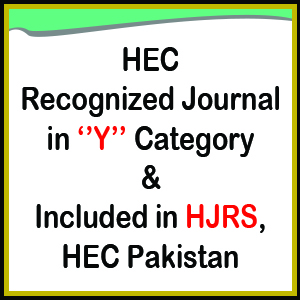The Influence of Training and Development on Organizational Commitment of Academicians in Pakistan
DOI:
https://doi.org/10.47067/reads.v6i1.183Keywords:
Training & Development, Organizational Commitment, Influence, SmartPLSAbstract
It is recognized globally that training and development not only enhances the abilities, knowledge and skills of the staff member but it also changes their attitudes and behaviors. Such change in their attitudes and behaviors makes them committed with their respective organizations. This research work inquired association of training & development along with its dimensions with organizational commitment. We used Smart-PLS to make analysis of the data which were gathered from 320 academic staff of seven public sector universities of Khyber Pakhtunkhwa (KP), Pakistan. The results of this work found a significant influence of training & development and its dimensions on organizational commitment of academic staff. The results further suggested that training and development play crucial role in the enrichment of organizational commitment of academic staff. Committed academic staff not only stays longer with the universities but put more effort and perform better as compared to non-committed academic staff. We also concluded in this study that if the management of the universities intends to enhance the commitment of academic staff with the universities, they need to provide them maximum opportunities of training & development. We also discussed the theoretical and practical implications of the results.
References
Ahmad, Kamarul Zaman, & Bakar, Raida Abu. (2003). The association between training and organizational commitment among white?collar workers in Malaysia. International Journal of Training and Development, 7(3), 166-185.
Al?Emadi, Mohammed Asad Shareef, & Marquardt, Michael J. (2007). Relationship between employees’ beliefs regarding training benefits and employees’ organizational commitment in a petroleum company in the State of Qatar. International Journal of Training and Development, 11(1), 49-70.
Alhassan, Joy Ukwo. (2011). The relationship between employee perceptions of training, organisational commitment and their impact on turnover intentions: a survey of selected SMMEs in the Cape Metropole Area. Cape Peninsula University of Technology.
Allen, Natalie J, & Meyer, John P. (1990). The measurement and antecedents of affective, continuance and normative commitment to the organization. Journal of occupational psychology, 63(1), 1-18.
Bartlett, Kenneth, & Kang, Dae-seok. (2004). Training and organizational commitment among nurses following industry and organizational change in New Zealand and the United States. Human Resource Development International, 7(4), 423-440.
Bartlett, Kenneth R. (2001). The relationship between training and organizational commitment: A study in the health care field. Human resource development quarterly, 12(4), 335-352.
Bashir, Nouruddeen, & Long, Choi Sang. (2015). The relationship between training and organizational commitment among academicians in Malaysia. Journal of Management Development, 34(10), 1227-1245.
Blau, Peter Michael. (1964). Exchange and power in social life: Transaction Publishers.
Bulut, Cagri, & Culha, Osman. (2010). The effects of organizational training on organizational commitment. International Journal of Training and Development, 14(4), 309-322.
Cohen, J. (2013). Statistical Power Analysis for the Behavioral Sciences: Taylor & Francis.
Cropanzano, Russell, & Mitchell, Marie S. (2005). Social exchange theory: An interdisciplinary review. Journal of management, 31(6), 874-900.
Fornell, C., & Larcker, D.F. (1981). Structural equation models with unobservable variables and measurement error: Algebra and statistics. Journal of marketing research, 18(3), 382-388.
Hair, Joseph F, Sarstedt, Marko, Ringle, Christian M, & Gudergan, Siegfried P. (2017). Advanced issues in partial least squares structural equation modeling: SAGE Publications.
Henseler, Jörg, Ringle, Christian M, & Sarstedt, Marko. (2015). A new criterion for assessing discriminant validity in variance-based structural equation modeling. Journal of the academy of marketing science, 43(1), 115-135.
Huang, Meiju, & Chen, Mei-Yen. (2013). Internal marketing, customer orientation, and organizational commitment: Moderating effects of work status. Psychological Reports, 113(1), 180-198.
Jehanzeb, Khawaja, Rasheed, Anwar, & Rasheed, Mazen F. (2013). Organizational commitment and turnover intentions: Impact of employee's training in private sector of Saudi Arabia. International Journal of Business and Management, 8(8), 79-90.
Krejcie, Robert V, & Morgan, Daryle W. (1970). Determining sample size for research activities. Educ psychol meas, 30, 607-610.
Kulkarni, Pallavi P. (2013). A literature review on training & development and quality of work life. Researchers World, 4(2), 136-143.
McNeese-Smith, Donna K, & Nazarey, M. (2001). A nursing shortage: building organizational commitment among nurses. Journal of Healthcare Management, 46(3), 173-187.
Meyer, John P., & Allen, Natalie J. (1991). A three-component conceptualization of organizational commitment. Human Resource Management Review, 1(1), 61-89. doi: http://dx.doi.org/10.1016/1053-4822(91)90011-Z
Newman, Alexander, Thanacoody, Rani, & Hui, Wendy. (2011). The impact of employee perceptions of training on organizational commitment and turnover intentions: a study of multinationals in the Chinese service sector. The International Journal of Human Resource Management, 22(8), 1765-1787.
Noe, Raymond A, & Schmitt, Neal. (1986). The influence of trainee attitudes on training effectiveness: Test of a model. Personnel psychology, 39(3), 497-523.
Riaz, Amir, Idrees, Rana Nadir, & Imran, Asma. (2013). Employees’ belief regarding training benefits and organizational commitment: A case in banking sector of Pakistan. Middle-East Journal of Scientific Research, 16(3), 310-318.
Silva, Rui Entradas, & Dias, Alvaro Lopes. (2016). The role of organizational training on organizational commitment. The case of private security employees working remotely. European Journal of Business and Social Sciences, 5(08), 14-30.
Staff, ATD. (2013, December 12). $164.2 Billion Spent on Training and Development by U.S. Companies. from https://www.td.org/insights/1642-billion-spent-on-training-and-development-by-us-companies
Urbancova, Hana. (2013). Competitive advantage achievement through innovation and knowledge. Journal of Competitiveness, 5(1), 82-96.
Yang, Huadong, Sanders, Karin, & Bumatay, Carolina Perey. (2012). Linking perceptions of training with organizational commitment: The moderating role of self-construals. European Journal of Work and Organizational Psychology, 21(1), 125-149.









